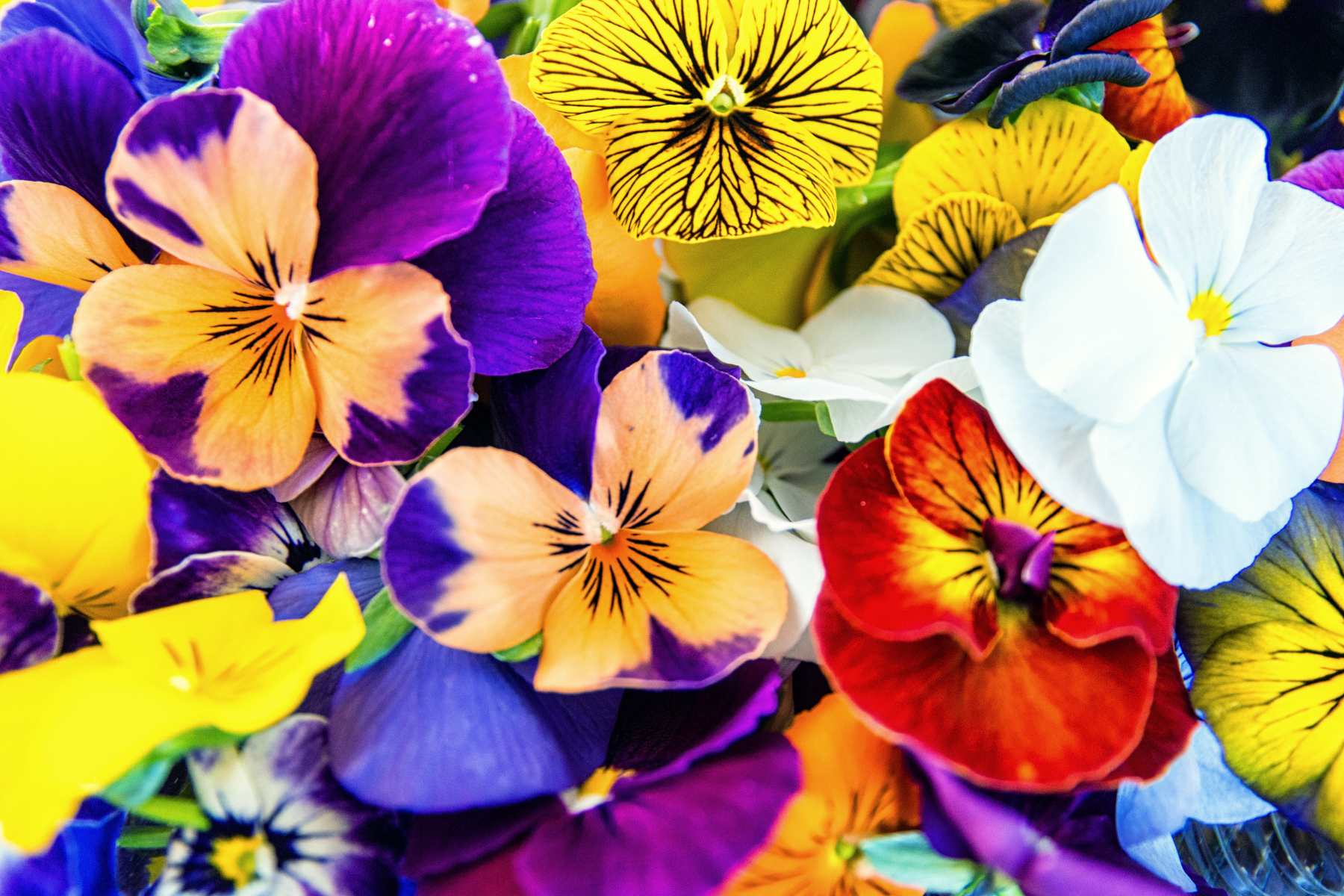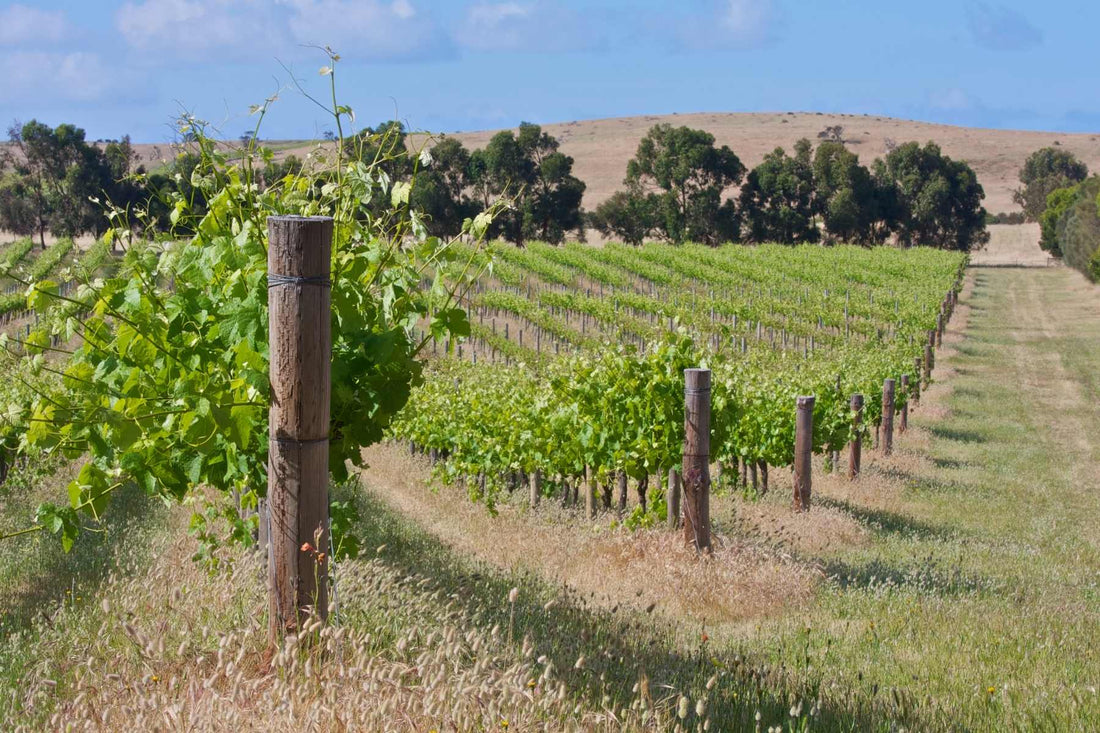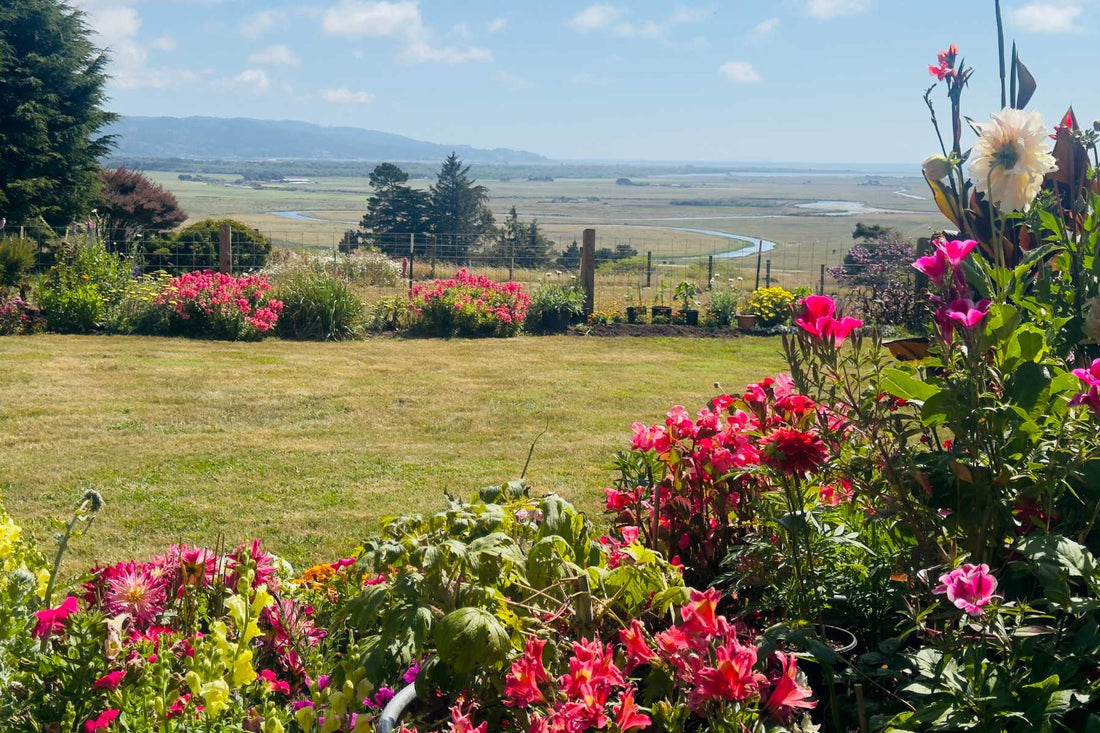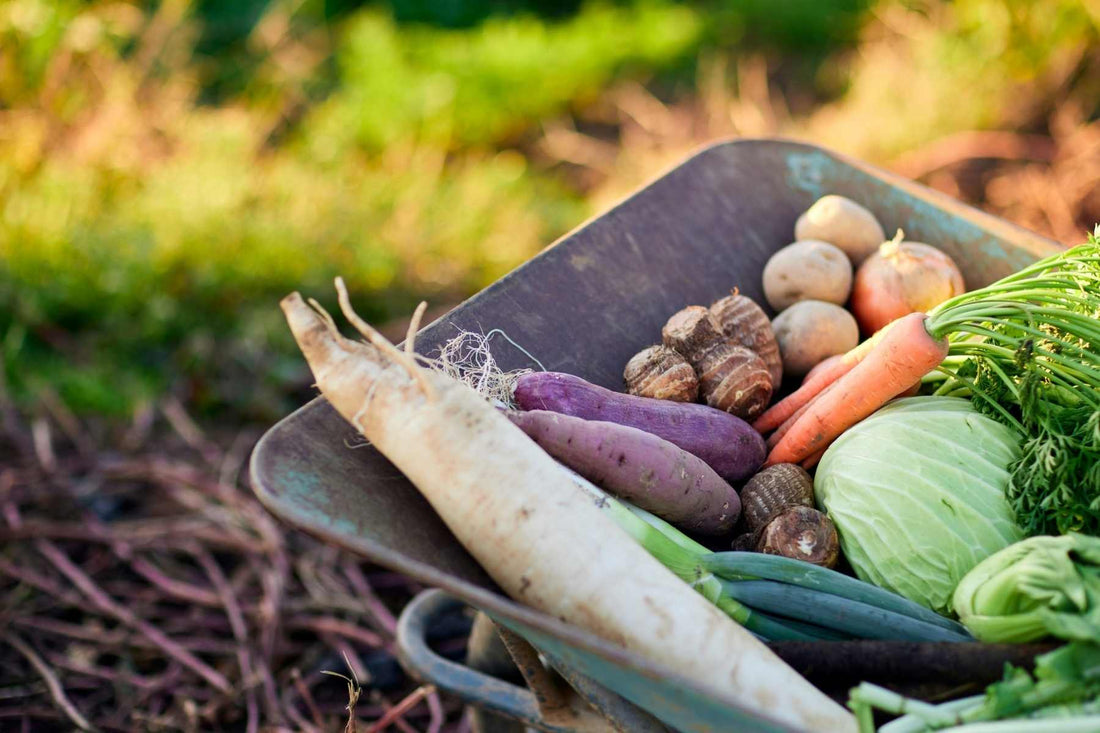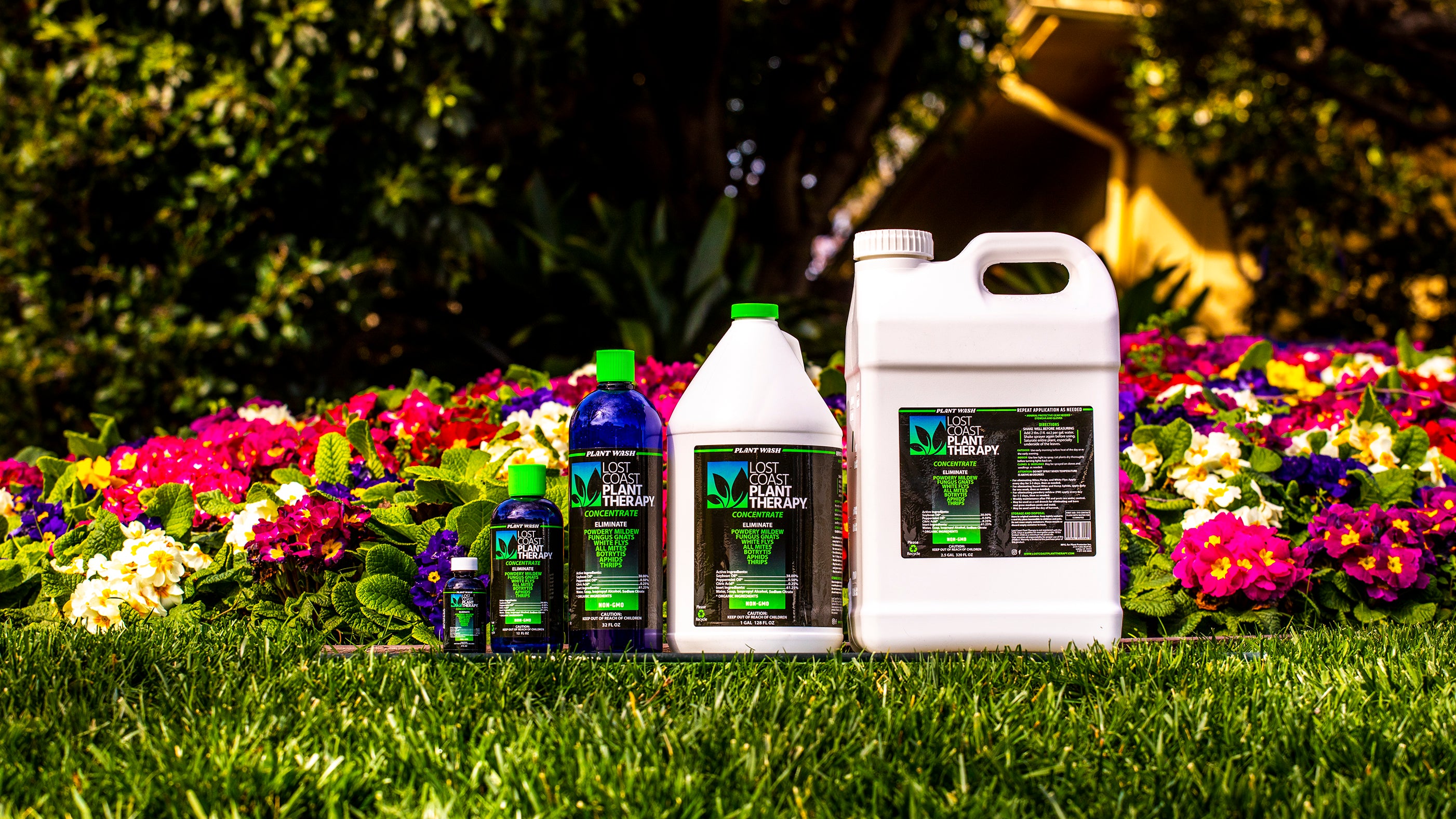Most people think of flowers as something you put in a vase, not on your plate, but edible flowers are so much more than decoration. They can taste peppery, sweet, herbal, or even citrusy, and they add a kind of surprise you don’t get from regular herbs or veggies. A single nasturtium blossom can wake up a salad with a spicy kick. Chamomile flowers, which look like tiny daisies, steep into a tea that feels instantly calming. Lavender flowers turn simple baked goods into desserts that smell as lovely as they taste. Marigold petals can make a pot of rice glow golden yellow, while borage flowers can look like little jewels when frozen into ice cubes.
In this guide, you’ll find out how to grow and care for eighteen of the most popular edible flowers, what each one tastes like, and the smartest ways to use them fresh or dried in your cooking. We’ll talk about soil prep, planting, harvesting, and even how to keep your flowers healthy without chemicals you wouldn’t want anywhere near your food.
By the time you’re done reading, you won’t just know which flowers you can eat, you’ll feel confident about actually growing them, picking them at their best, and turning them into dishes and drinks that taste as good as they look.

Choosing the Right Flowers to Grow and Eat
Not every flower in the garden belongs on your plate, and part of the fun of edible gardening is knowing which ones do. The safest way is always to grow your own flowers from seed or from plants you know have not been treated with harmful sprays. See our guide to starting flower seeds here. Many plants sold in garden centers are bred for looks, not eating, and might have been exposed to chemicals that are not safe for consumption.
Correctly identifying varieties makes a big difference, too. Calendula, often called “pot marigold,” is a classic edible flower with cheerful petals and a mild, tangy flavor. But the ornamental marigolds often planted for color alone don’t taste nearly as pleasant. Chive flowers add a peppery pop to salads and eggs, but their wild relatives aren’t the same thing. When you’re unsure, stick to a trusted list of edible flowers that gardeners have used safely for generations.
And just like with any food, everyone’s body reacts a little differently. Most edible blooms are gentle, but some people may experience an adverse reaction or have a sensitivity to the flowers. Just as with food allergies, it’s best to try small amounts first when experimenting with something new.

Preparing the Garden for Edible Blooms
Healthy soil is the quiet partner behind every beautiful edible flower. It’s the foundation that decides how strong, flavorful, and long-lasting your blooms will be. Most flowers do best in soil that drains well and is enriched with organic matter, but edible blooms can be a bit more particular. Lavender and thyme, for example, are happiest when the soil leans slightly alkaline, while borage thrives when things are just a touch acidic. Working in composted leaves or aged manure helps strike the right balance, feeding your plants steadily and keeping the flowers coming all season.
Good drainage is also essential. If water lingers, roots suffer and flowers fade quickly. Raised beds or containers are a great choice for flowers like borage and nasturtium that don’t enjoy soggy roots. A little mulch helps lock in moisture for thirsty plants like squash blossoms, while also keeping weeds down so our flowers fresh can shine without competition.
We also like to think of companion planting as an extra layer of preparation. Alyssum draws in pollinators with its tiny white flowers, making it an excellent partner for vegetables. Calendula and marigold are famous for luring beneficial insects while discouraging less welcome ones. By pairing edible flowers with vegetables and herbs, we create a garden that is both practical and breathtaking, a place where flowers are a great way to feed the eye, the bees, and eventually, our plates.

Harvest Timing and Flavor Secrets
Harvesting edible flowers is as much an art as growing them. Timing transforms how flowers taste. Early morning is best, when fresh flowers are plump with moisture but the sun hasn’t yet made them limp. That’s the moment when blooms like violets, pansies, and nasturtium flowers are at their peak, crisp, colorful, and full of flavor.
Handling is just as important. When we snip a rose petal, removing the white base of the petal prevents bitterness and leaves only sweetness behind. With squash blossoms, picking male flowers after they’ve opened for the day means we get tender blooms without interrupting fruit production. A chive flower is best harvested right as the ball of florets opens, when the onion flavor is sharp but not overwhelming.
The stage of bloom also changes the flavor. Young chamomile flowers taste soft and gentle, while fully opened, daisy-like blossoms take on a bolder apple note. Mint is another surprise, its delicate flowers often carry a sharper, more refreshing edge than the leaves, which is why they’re such a standout when scattered over desserts.

18 Popular Edible Flowers and How to Grow Them
Violas
Violas are one of the easiest edible flowers to fall in love with. Their cool-season blooms thrive when other plants are still waking up, which makes them perfect for filling early gaps in the garden. Unlike many flowers, violas actually prefer the chill, once summer heat sets in, they’ll sulk and fade. The trick to keeping them going is succession planting, start a new round from seed every few weeks in spring and again in late summer so you always have fresh blooms.
In the kitchen, their petals carry a mild, slightly sweet taste that doesn’t overwhelm delicate dishes. Use as a garnish or add to salads and you’ll notice how they instantly make even a simple bowl of greens look like a chef’s plate. Violas are one of the few edible flowers that can handle drying without losing their color, so they’re excellent for making floral teas or decorating baked goods long after the garden season ends.

Chamomile
Chamomile flowers are famous for tea, but growing them yourself opens up a world of flavor and fragrance that store-bought blends can’t match. The apple-like sweetness of fresh chamomile is delicate, and harvest timing makes all the difference. The best moment is when the white petals are fully open but not yet drooping. Clip regularly and the plants will reward you with even more blooms, turning a little attention into a steady supply of tea.
Chamomile thrives in lean soil where other flowers might struggle. Too much fertility leads to floppy, weak plants. It’s one of those rare edible blooms that actually prefer a touch of neglect, good news if your garden doesn’t always get the pampering it deserves. Once dried, the flowers hold their sweet fragrance beautifully and can be blended with mint leaves or rose petals for a calming homemade tea. Just remember that pollinators love chamomile too, so harvesting early in the morning, before bees are active, ensures you’re not taking their share.

Alyssum
Sweet alyssum might look like groundcover, but its value as an edible flower goes far beyond the surface. Its tiny clusters of white flowers smell faintly of honey and make a subtle garnish when sprinkled over salads or fresh cheeses. But the trick with alyssum is that it’s less about eating in bulk and more about what it does for the rest of your garden. When tucked between vegetables, alyssum attracts hoverflies, beneficial insects whose larvae feast on aphids. That makes alyssum a quiet hero in the garden, working in the background to keep pest pressure down naturally.
Culinarily, alyssum is best used fresh and in small amounts. The flowers are delicate, and once harvested, they fade quickly, so plan to use them right away. One fun way is to scatter them over desserts, where their fragrance comes alive against the sweetness of fruit. They’re especially good with berries, think fresh strawberries topped with a dusting of tiny floral blooms.

Lavender
Lavender is one of those edible flowers that divides people, some adore its strong floral flavor, while others find it overpowering. Just a few lavender flowers can transform sugar cookies, lemonade, or even roasted meats with a flavor that feels both nostalgic and refined. When using lavender, always choose culinary varieties like ‘Hidcote’ or ‘Munstead,’ which have softer notes compared to the more resinous ornamental types.
For the kitchen, timing is everything. Harvest when the first few flowers on a spike have opened and the rest are still in bud. That’s when the oils are richest, giving you the best flavor and fragrance. Once dried, lavender holds its perfume for months, perfect for folding into baking mixes or blending with black tea. If plant diseases or powdery mildew show up, a gentle spray with our Natural Plant Wash can help protect the leaves without leaving residues you’d worry about later.

Bachelor Buttons (Cornflowers)
If you’ve ever wanted true blue flowers on your plate, bachelor buttons are the answer. They grow easily, even in poor soil, and their blooms keep coming if you harvest often. Unlike violas or chamomile, bachelor buttons don’t bring a strong flavor, they’re mild, slightly grassy, almost like a lettuce note in floral form. Their real appeal is visual. A cake decorated with their vivid petals looks like it’s been sprinkled with sapphires.
One tip for when growing them is bachelor buttons are cut-and-come-again champions. The more you snip, the more they bloom. However, they can flop if crowded, so give them breathing room in the garden. Bachelor buttons also dry beautifully, holding onto their blue hue, which makes them useful in herbal tea blends where color matters as much as flavor.

Calendula
Calendula, known as the “poor man’s saffron,” is one of the best edible blooms for cool-season planting as it can handle light frosts that shut down other flowers. That makes it a bridge crop, giving you fresh petals when few other blooms are available. The flowers shine in shades of sunny yellow and orange, and the petals pull away easily to scatter into soups, stews, or rice, adding both brightness and a gentle tang.
But there’s more to calendula than flavor. The flower heads carry a sticky resin, which can be mildly antiseptic, gardeners once used it for skin salves long before its kitchen use was popular. To get the best flavor, always harvest the petals when the blooms are just fully open, as older flowers tend to taste bitter. A fun kitchen use is mixing fresh petals into softened butter for a golden spread that brings both color and a subtle tang to bread or roasted vegetables. Once dried, calendula petals keep their brightness better than most, making them an easy way to store a bit of sunshine from your garden year-round.

Chive Flowers
Chive flowers are as useful as the leaves, maybe even more so. Each globe-shaped purple head is actually made of dozens of tiny edible petals with a sharp, peppery onion kick. The flavor is bold, so they’re perfect for finishing dishes where you want a burst of freshness without adding raw onion. A single blossom pulled apart into florets can transform a salad or a potato dish.
Growing for both flowers and leaves takes balance. If you let every stalk bloom, the plant slows down on producing fresh green shoots. The best trick is to let a few go to flower for harvesting while keeping others trimmed back to encourage leafy growth. Chive flowers are also magnets for bees, so leaving a portion in bloom benefits pollinators and keeps your patch full of life.

Squash Blossoms
Few edible flowers feel as special as squash blossoms, but picking them takes a little know-how. To keep your plants producing, harvest only the male blooms, they grow on slender stems without a baby squash at the base. The best time to collect them is early in the morning, just as they’re opening, so they hold their shape for longer.
In the kitchen, squash blossoms are a treat whether you stuff them with cheese, give them a quick sauté, or use them raw. Sliced thin, they add a mild sweetness and a touch of elegance to summer salads, proof that simple can be just as impressive as fancy.

Roses
The trick to using roses is removing the bitter white base at the bottom of each petal, leaving behind a fragrance and subtle sweetness that shines in everything from homemade syrups to candied decorations. Old-fashioned varieties and heavily scented types offer the richest flavors, while many modern hybrids are bred more for looks than taste.
Growing roses for edible use requires a little more care than growing them for cut flowers. Because you’ll be eating the petals, it’s important to keep them free of chemical sprays. Aphids and thrips are common rose pests, often clustering on fresh growth just as buds form. That’s when Lost Coast Plant Therapy becomes a helpful ally as it controls pests without leaving residues you wouldn’t want near your plate.
Read more on how to grow roses here.

Pansies
Pansies share the same charm as violas, but on a bigger, bolder scale. Their blooms are larger, more vivid, and often marked with dramatic face-like patterns that make them irresistible for decorating cakes, cookies or salads.
In the garden, pansies appreciate cool weather and will thrive in spring and fall. They tend to fade in hot summers, but you can extend their season by giving them partial shade and steady moisture.

Thyme Flowers
If you’ve ever brushed against a thyme plant in bloom, you know how powerful those tiny flowers can be. They carry the same concentrated flavor as the leaves, but with a floral softness that makes them especially useful as a garnish.
For gardeners, thyme is one of the easiest herbs to grow, but there’s a secret to balancing flowers with foliage. Once the plant flowers heavily, it slows down on leafy growth. The best approach is to snip flowers steadily, not only do you get flavorful blooms, but the plant responds by sending out new stems, keeping the cycle going. Thyme flowers also attract pollinators in droves, which benefits nearby vegetables, so even if you don’t harvest every bloom, leaving some in place supports the health of your whole garden.

Mint Flowers
Mint has a reputation for spreading everywhere. The blossoms, often white, pink, or lilac, carry the same refreshing flavor as the leaves but in a gentler form. When growing mint, you’ll notice it attracts a surprising number of insects, both good and bad. While bees and butterflies adore the blooms, spider mites sometimes appear on stressed plants, especially during hot, dry spells.
Spraying our Natural Plant Wash as a preventative is enough to keep them in check without harming the beneficial visitors you actually want around. Harvest flowers often to encourage fresh shoots, and you’ll find the plant stays lush instead of leggy.

Marigold
While calendula is sometimes called marigold, the common French and African marigolds bring their own unique flavor to the table. Their petals have a tangy, citrus-like taste that surprises first-time tasters, and their bold orange and yellow hues make them a natural fit for brightening dishes. Unlike calendula, which holds up well dried, marigold petals are best used fresh, sprinkled over salads or stirred into rice just before serving.
In the garden, marigolds are famous for their ability to repel soil pests, making them as useful as they are edible. Some varieties, like ‘Gem’ marigolds, are especially popular in the kitchen because of their lighter, more delicate flavor compared to the stronger French types. Just one plant can produce a season-long supply of petals, and the more you pick, the more it blooms.

Arugula Flowers
If you’ve ever grown arugula and forgotten to harvest for a week, you’ve probably met its flowers. Tall spikes topped with white blossoms veined in purple suddenly appear, each one carrying a peppery kick that mirrors the leaves but with a slightly floral edge.
Arugula bolts quickly in warm weather, but the flowers are a reward rather than a loss. Add them to pasta salads, top pizzas just out of the oven, or mix them into omelets for a sharp, surprising bite. The flowers can also be a conversation starter at the table, most guests expect greens, not blossoms, to carry that bold peppery note. Harvest often, as the blooms fade quickly once open, and they’re best eaten the same day they’re picked.

Lovage
Lovage is one of those plants that makes you feel like you’ve stumbled onto a secret. Its towering stems and umbrella-like flower clusters aren’t common in most gardens, but its celery-like flavor is unforgettable once you try it. The tiny yellow-green flowers are especially good for flavoring broths or sprinkling sparingly over roasted meats.
Because lovage grows tall, it does best at the back of the garden where it has room to stretch. Once established, it’s surprisingly hardy, returning year after year with little fuss. The flowers, while edible, are also a magnet for beneficial insects, so harvesting lightly helps keep your pollinator population thriving.

Borage
Borage might be the most whimsical of all edible flowers. Its star-shaped blue blooms look almost unreal, and their fresh cucumber-like flavor is a refreshing surprise. One of the simplest pleasures is freezing whole borage flowers into ice cubes and dropping them into sparkling water, it’s like having little jewels in your glass.
Borage is a self-seeding annual, which means once you grow it, you’ll likely see it return year after year in unexpected spots. The plants get large and a little unruly, but they more than earn their keep by attracting pollinators. Bees in particular flock to borage, which makes it a great companion for crops like cucumbers, tomatoes, and squash. Harvest flowers regularly to keep plants producing, and don’t be surprised if you end up with more blooms than you know what to do with, they’re that generous.

Cilantro Flowers
Cilantro’s leaves may divide opinion, but its flowers are another story. Delicate and lacy, usually white or pale pink, they have a milder flavor with just a hint of the herb’s distinct taste. More floral and less pungent than the leaves, they’re perfect for garnishing Latin-inspired dishes, curries, or even soups where you want just a whisper of cilantro without overpowering the whole dish.
One thing to know is that cilantro bolts quickly in heat, and once it does, the leaves lose quality. Instead of fighting it, embrace the flowers. They eventually form seeds, coriander, giving you a second edible crop from the same plant.

Nasturtium
Nasturtiums are the gateway edible flower for many gardeners. They’re easy to grow, thrive with little care, and their peppery, almost radish-like bite is unforgettable. Both leaves and flowers are edible, but the blooms steal the show with their bright orange, yellow, or red colors that pop against any dish. Tossed into a salad, they provide both spice and color, and stuffed with cream cheese, they make an appetizer that always disappears fast.
In the garden, nasturtiums are tough but can attract aphids, especially on new growth. The good news is they’re often used as a trap crop, drawing pests away from more delicate vegetables. Still, if you’d rather keep them pristine for eating, applying our Natural Plant Protector is an easy way to protect them without losing their edibility. Nasturtiums also reseed freely, so once you’ve grown them, they tend to return year after year like cheerful old friends.

Using a Natural Pesticide to Keep Edible Flowers Healthy
Edible flowers face plenty of uninvited guests in the garden. Aphids gather on new shoots, spider mites multiply when the weather turns hot and dry, and mildew sneaks in when plants don’t get enough airflow. Left unchecked, these pests can take a bed of thriving blooms and drag it down almost overnight. And because the petals end up on your plate, harsh chemical sprays aren’t an option.
This is where Lost Coast Plant Therapy, our minimum-risk pesticide, makes the difference. Made with natural and organic ingredients, it’s safe for flowers you plan to eat while still tough on the usual suspects. A thorough foliar spray covers both sides of the leaves so pests can’t settle in, while a soil drench tackles problems from below. The key is consistency.
See Instructions and How it Works here.

Seasonal Planning for Year-Round Edible Flowers
One of the most satisfying parts of growing edible flowers is realizing you don’t have to enjoy them in short bursts, with a little planning, you can have something blooming almost every week of the year. The key is understanding which flowers thrive in cooler weather and which need heat to really perform.
Cool-season bloomers like pansies, violas, and chamomile love the gentler temperatures of spring and fall. Their petals bring soft sweetness and cheerful color just when the rest of the garden is still waking up. On the other hand, warm-season stars like nasturtium, marigold, and squash blossoms wait until the soil heats up before they really show off. Their flavors, peppery, citrusy, or richly savory, match the intensity of summer itself.
The trick is to stagger your planting. Tuck in pansies or violas early in spring, and by the time they begin to fade in the heat, your nasturtiums and marigolds will be ready to take over. Squash blossoms arrive right in the middle of summer’s bounty, and chamomile can circle back again in fall when the air cools. When you look at your planting calendar as a relay race instead of a one-time show, the baton of color and flavor never drops.

Conclusion
Growing edible flowers is about bringing flavor, beauty, and a sense of wonder into everyday life. A single nasturtium bloom scattered across a salad can spark conversation. A handful of calendula petals stirred into rice can turn a weekday dinner into something memorable. These small details connect us back to the garden in ways that store-bought ingredients never quite can.
You don’t need acres of space or a gardener’s lifetime of knowledge to enjoy them. Even a pot of violas by the doorstep or a few marigolds tucked in beside the tomatoes can give you blossoms to eat, admire, and share. Each flower carries its own story, its own taste, and its own moment of beauty. When we grow and use them, we’re not just adding color to our meals, we’re weaving the garden directly into the rhythm of our daily lives.
Edible flowers invite us to see food differently, to find joy in the details, and to celebrate the simple fact that nature gives us both beauty and flavor in harmony. Once you experience that, it’s hard to imagine gardening, or cooking, without them.

FAQ's
Which are the most common edible flowers I can start with?
If you’re just dipping your toes into gardening, start with common edible flowers like nasturtium, calendula, violet, and pansy. These are easy to grow, their petals are edible, and they bring distinct flavors. Some flowers have a peppery flavor, while others, like violets, flowers have a sweet taste that feels almost candy-like. The best part is you can eat the flowers straight from the garden when you know they’re grown without chemicals.

Can whole flowers really be eaten, or just the petals?
It depends on the variety. Some blooms are perfect as a whole flower, like violas or pansies, which are small flowers with tender textures. Others, such as roses, are best when you select flowers carefully and remove the white base so only the fragrant petals are eaten.

How do I select flowers or choose flowers safely for eating?
The first rule is never eat flowers unless you’re sure they’re safe. Some flowers are toxic, so stick to a trusted list of edible flowers and grow your own when possible. Select flowers from seed packets labeled for culinary use, not ornamental-only mixes. Always choose flowers that haven’t been sprayed with pesticides.
Read more on the types of pesticides and their impact here.

Can I use dried flowers, or do they have to be fresh?
Fresh flowers bring the most vibrant flavor, but dried flowers can also be added when you want subtle, lasting notes. Lavender flowers, for example, are often dried and used in sugar or baked goods. Chamomile is another classic, with dried flowers steeped into calming teas that never go out of style. The key is choosing flowers that keep their fragrance well.

Additional Resources
Edible flowers - University of Minnesota Extension
A Consumer's Guide to Edible Flowers - Penn State Extension
Choosing and Using Edible Flowers - NC State Extension
Edible Flowers - Colorado State University Extension
Edible Flower Guide - Nebraska Extension in Lancaster County
Edible Flowers for the Garden & Table - University of Alaska Fairbanks Cooperative Extension
Nasturtium - University of Illinois Extension
Borage - University of Illinois Extension
Marigolds - University of Minnesota Extension
Chives, Allium schoenoprasum - University of Wisconsin–Madison Division of Extension Horticulture


